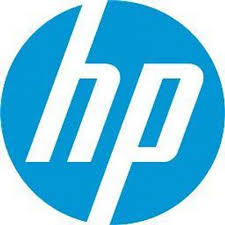It wouldn’t shock anyone to hear that 2016 budgets will be even tighter than 2015. In fact, in the President’s FY 2016 budget proposal, government infrastructure spend would actually go down.
The drumbeat of “do more with less” has never been stronger. So what can agencies do to cut costs and be more efficient?
We have a suggestion: look to printers.
While this answer many surprise you, it shouldn’t. HP found in an HP Managed Print Services white paper that when you consider that more than five percent of an enterprise’s operational expenditure is spent on printing and document management.
“Oftentimes agencies do not take into consideration the full burdened cost of printing,” said Nancy Benson, Public Sector Segment Manager for Printing and Personal Systems at HP. “Costs go way beyond just the cost of the printer, the paper, the ink and the toner.”
Here’s another stat for you: for every dollar an organization spends on printing, an additional nine dollars is spent on the burden cost. Put another way, 10 percent of an organization’s overall print spend can be attributed to the hard cost of the printing infrastructure.
“The remaining 90 percent is spent managing the documents through their lifecycle. For example, those costs could come from IT support and infrastructure, administration, facilities costs and document management,” explained Benson.
One way to lower printing expenses is to implement managed print services (MPS). HP has their own solution, aptly named HP MPS. “MPS helps organizations productively and profitably manage their printing environment, as well as their paper and digital workflow processes,” said Benson.
So how does HP Managed Print Services really help your agency save money? In three important ways:
- Manage the Environment – Once you have the right devices in place, you still have to manage them. Agencies need to be able to track visibility of usage patterns and total printing costs for their printing services. “HP uses tools like HP Web to Admin, Universal Print Driver, to manage and track the imaging and printing environment to really maintain that end to end visibility and control of the devices, the content and then the workflow,” said Benson.
- Optimize Infrastructure – “Optimizing the infrastructure is really about getting control of the devices in the environment, and then balancing productivity and cost by putting the right devices in the right places,” said Benson. Agencies need to ask themselves, does everyone need a printer at their desk? Is a printer in the center of the office useful? Agencies need to understand how end user printing. What are their needs?
- Improve Workflow – Automating and digitizing paper-intensive workflows can improve process efficiency and productivity while reducing the cost of managing the ever-increasing amount of information. “It’s not always about paper. Sometimes improved workflows can be about taking paper out of the equation by capturing information at the start of the process through the use of a tablet or other mobile device” said Benson.
If an agency finds itself struggling with the issues above, then that itself is indicative of a need for better control of the print environment.
One organization that has taken this approach is the Environmental Protection Agency. Not surprisingly, the EPA is very concerned about wasted paper and hardware. Working with ABM Federal (an HP Managed Print Advanced Specialist partner), a branch of EPA successfully consolidated its copy center, printer service and support, and consumables under one program. The EPA was able to reduce the number of print devices by 10 percent during the first stage and eliminated desktop printers in favor of more efficient workgroup devices.
Sustainability isn’t just a purview of the EPA – many organizations that are looking to an MPS solution are hoping to have a positive impact on sustainability.
“Our solutions have features that automatically shut off the devices when they’re not in use and then instantly turn them on when they’re needed,” said Benson. “Instead of having multiple separate devices that all require power and supplies, you can replace them with a single device that handles printing, scanning, copying and faxing. There are intuitive print management tools to enable IT managers to centrally manage these devices, schedule sleep and wakeup modes or configure duplex printing efficiently across the entire print fleet, which can reduce energy and paper consumption.”
You can check out the online HP Managed Print Analysis tool here, which allows you to quickly and easily evaluate the efficiency of your print environment!
In addition, you can receive a customized report that pinpoints your inefficiencies and provides practical recommendation to help you boost productivity and reduce costs.
Try the online analysis tool now and let’s see if you can save up to 30% on printing!
* “Results depend upon unique business environment, the way HP products and services are used and other factors. Overall printing costs are unique to each company and should not be relied upon for savings you may achieve. According to industry analysts, savings of up to 30% are typical with Managed Print Services.”






Thank you. A great article. I also try to print 2 pages on a sheet when possible. And to duplex when I can, to save paper. Then there is freeware that will print webpages minus ads. Again, thank you, Emily.